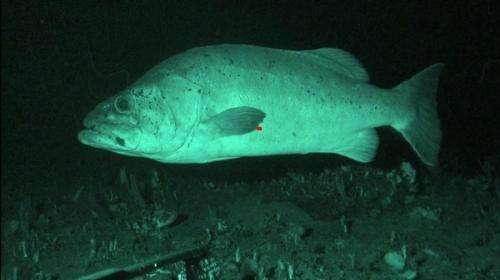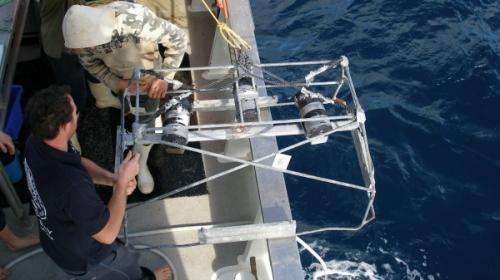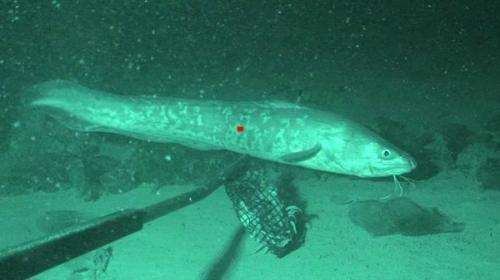Baited video cameras help detect deep sea fish

Using baited longlines in conjunction with baited remote underwater video systems (BRUVs) has improved the way in which deep water fish stocks are monitored for conservation purposes.
UWA Oceans Institute fish ecologist Dianne McLean says the newer video technology detects many fish that traditional baited longline sampling fails to catch.
Her observations come after a trial of both techniques to survey deep water fish assemblages on the south-east Australian continental slope.
Her team, involving Curtin University and CSIRO scientists, set both longlines and baited cameras in 22 locations ranging from Border Bank, just south of Brisbane, to Freycinet off Tasmania's east coast.
She says they conducted the survey to address concerns about over-fishing.
"We learned that longlines and BRUVs observe quite different continental float fish assemblages, but both of them provide useful information to management," Dr McLean says.
She gave the example of larger fish such as six-gilled sharks (Hexanchus griseus), which are probably able to break the hooks on baited longlines and escape, but which showed up in the BRUVs videos.
However BRUVs in the same survey detected just 10 gulper sharks (Centrophorus granulosus) compared to 773 caught on the longlines.
While the longlines were more efficient at sampling this population, it is not suitable for regular surveys.

"They further deplete already vulnerable species because most of them are either dead or in poor condition when they reach the surface," she says.
"Whereas the BRUVs are non-lethal, they're potentially better suited to monitoring vulnerable species."
Dr McLean says they will need more extensive sampling using BRUVs to detect changes in gulper shark abundance over large areas because their populations are so depleted.
"It isn't hard to do because they are logistically quite simple and quick to use compared to setting longlines," she says.
"I think the data reinforced the broad scale depletion of the gulper shark species off south eastern Australia, but also highlighted some areas where there were more of them than were expected," she says.

"There seem to be some locations of refuge or regenerating populations like Port Stephens."
She says she would like to use BRUVs more extensively in the deep sea, while further developing their use.
This includes experiments with the effect different types of lights, attached to the cameras, might have on various fish species.
She also intends to trial the use of ropeless BRUVs and to start surveys off the WA coast.
More information: D.L. McLean, M. Green, E.S. Harvey, A. Williams, R. Daley, K.J. Graham, "Comparison of baited longlines and baited underwater cameras for assessing the composition of continental slope deepwater fish assemblages off southeast Australia," Deep Sea Research Part I: Oceanographic Research Papers, Volume 98, April 2015, Pages 10-20, ISSN 0967-0637, dx.doi.org/10.1016/j.dsr.2014.11.013.
Provided by Science Network WA



















